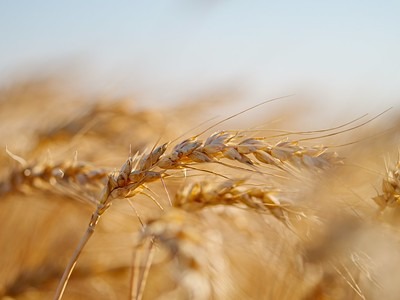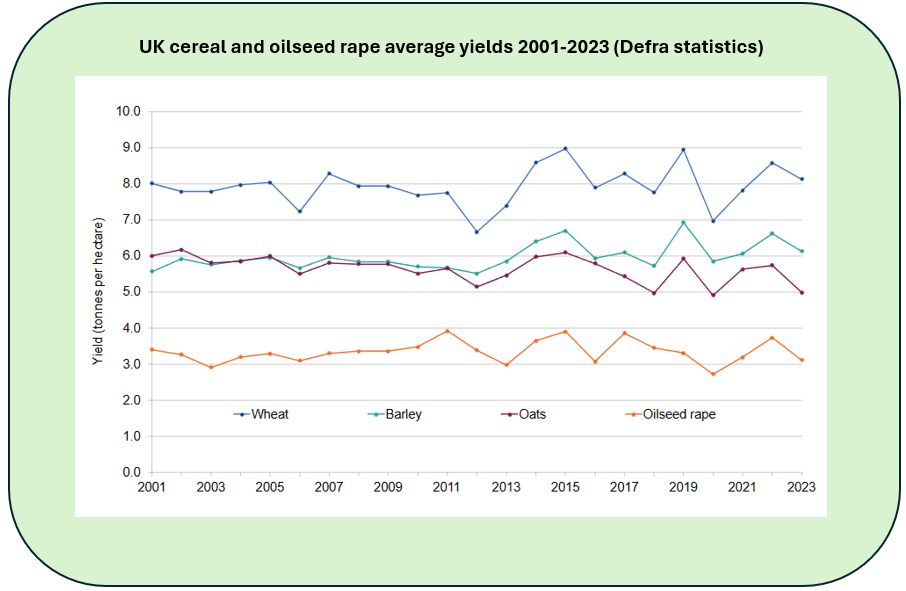
A tale of two Professors
10th April 2024By Jim Orson, Member of the BCPC Advisory Board
Pic: Pepperberryfarm
During the dark days of this winter, I was due to meet a leading cereal agronomist from Canada who was in Cambridge for the day. Unfortunately, due to covid, the meeting never took place.
One of the subjects we were due to discuss was the development of the current UK management guidelines for winter wheat. After our cancelled meeting, I described the initial stages of their development in an email to my Canadian colleague; the title ‘A tale of two Professors’. These two academics’ views on wheat management heavily influenced practices in northern Europe in the mid to late 1970s.
It was in the 1970s that the science and practice of growing wheat changed fundamentally. This was due to innovations in plant breeding and pesticides. The initial step was the introduction of isoproturon and chlorotoluron early in the decade. They provided very, very effective grass weed control in wheat (sigh!) and enabled earlier drilling thus benefitting both the crop and the soil.
Then in the mid-1970s semi-dwarf wheat varieties were introduced. They had a significantly higher proportion of their above-ground biomass in grain i.e. a higher harvest index. Their shorter straw also meant that they stood better and so more nitrogen could be applied. More nitrogen meant more disease but the triazole fungicides became commercially available in the latter part of the decade. Hence, the basic tools of today’s wheat management were available but how were they to be deployed to optimise yields?
Enter the Two Professors
This is where the two Professors come in. They were aware by then that the harvest index of a particular variety was quite stable. So they reasoned that the higher the above ground crop biomass at harvest, the higher the grain yield. However, they profoundly disagreed on how to achieve this.
Professor Herman Effland (known affectionally by UK growers as Herman the German) from Kiel really went for it from the very start. This included high seed rates and lots of early nitrogen in the spring, which in turn necessitated high use of plant growth regulator and fungicides.
On the other hand, Professor Laloux, Professor of Agronomy at Gembloux University in Belgium, took a more nuanced approach. He believed that high biomass at harvest comes from a crop composed of robust tillers. Similar or lower seed rates to those usually adopted in the UK in the 1970s were the basis of his approach.
Fewer growth regulators and fungicides were associated with this approach. Interestingly, as far as I know, they were the first to prescribe seed rates as the number of seeds sown rather than the weight of seed sown. The age of plant counts started then!
As an ADAS local adviser in the Tendring Hundred in Essex, I came under pressure on which approach to take, the Laloux or the Schleswig-Holstein (Effland) system. Together with some local farmers, I did a field scale replicated trial in 1978 on a bit of lovely soil in sight of the Harwich Docks. Four management systems were investigated, Laloux and Schleswig-Holstein plus the host farmer’s and my approach.
By early April it was almost impossible to walk through the Schleswig-Holstein system plots. Then followed a period of huge tiller losses and the tillers that eventually bore ears were on the ‘leggy’ side. I remember thinking at the time that this system involved a tremendous loss of resources, both natural and crop inputs.
Trial Results
The result from this single field trial was that the Schleswig-Holstein system was the least economic system and the plots grown to my prescription were both the highest yielding and the most profitable. I can claim no credit for this: I simply adopted the Laloux system in terms of seed rates but managed fungicide inputs and nitrogen timings according to the then UK best practice. What this result, along with the results of other trials held in the late 1970s, tells us is that high biomass at harvest is best achieved by managing crops that are not pushed too early.
This experiment, particularly what happened in the Schleswig-Holstein plots, highlighted for me that the main period of tiller loss is an important issue. This starts at the end of tillering and lasts for around four weeks. Unfortunately, there is little that a farmer can do beyond ensuring an appropriately populated and healthy crop. This is because wheat takes the decision on the extent of tiller loss based on current crop and weather conditions.
 Chlormequat can increase the number of grain sites surviving tiller loss. However, this can sometimes result in lower yields. This can occur in years when conditions later in the season result in poor grain fill. In this situation, chlormequat treated crops with extra grain sites can contain disproportionally more tail corn at harvest. On the other hand, there may be a yield benefit when there are poor conditions in the main period of tiller loss followed by good conditions for grain fill.
Chlormequat can increase the number of grain sites surviving tiller loss. However, this can sometimes result in lower yields. This can occur in years when conditions later in the season result in poor grain fill. In this situation, chlormequat treated crops with extra grain sites can contain disproportionally more tail corn at harvest. On the other hand, there may be a yield benefit when there are poor conditions in the main period of tiller loss followed by good conditions for grain fill.
So it seems that the weather during the main period of tiller loss is of prime importance. High levels of solar radiation throughout this time encourage tiller growth and survival (www.acsess.onlinelibrary.wiley.com/doi/full/10.2134/age2018.12.0066). Perhaps it comes as no surprise that in the yield breakthrough years of 1984, 1996 and 2015 there was prolonged sunny weather in the spring followed by good conditions during grain fill.
Things do not look too promising for this year. High rainfall in any month has been negatively associated with yield (www.sciencedirect.com/science/article/abs/pii/016819239402174I). My observation is that higher national average yields of wheat are typically associated with dry springs. However, this may be partially or solely due to the ability to apply inputs at the correct time, lower levels of septoria and perhaps lower levels of root diseases, notably take-all (www.ahdb.org.uk/knowledge-library/take-all-disease-in-cereals-prevent-detect-control).
Sunny weather over the next month or so will provide a stronger foundation for this year’s crop. It needs it. Here’s hoping!

